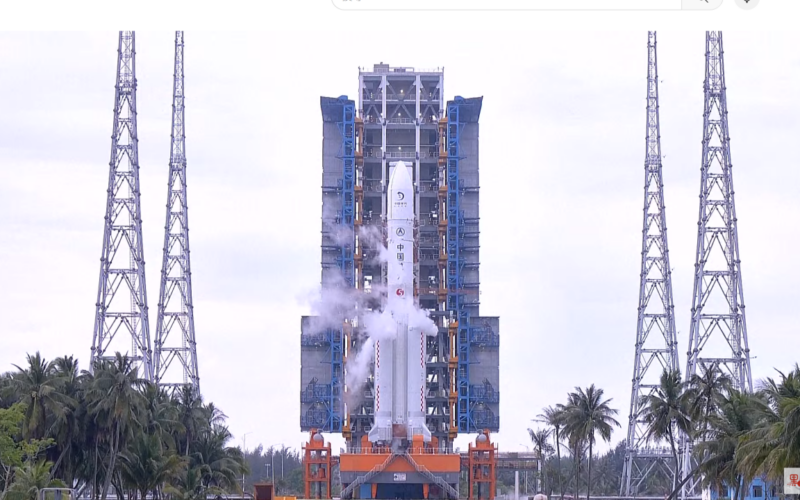In a landmark achievement for space exploration, China’s Chang’e-6 lunar probe has successfully returned to Earth with the world’s first samples from the far side of the moon. The mission’s re-entry capsule parachuted into the Siziwang Banner region of Inner Mongolia on Tuesday, marking a significant milestone for the China National Space Administration (CNSA).
The Chang’e-6 mission, named after the Chinese moon goddess, departed from Hainan province in southern China on May 3. It landed on the moon’s far side on June 2, a region permanently hidden from Earth due to the moon’s tidal locking. The lander spent two days in the South Pole-Aitken (SPA) basin—one of the moon’s oldest and largest craters—collecting rock and soil using a robotic arm and drill.
After gathering the samples, the ascent module launched from the moon’s surface, connected with the orbiter, and commenced the return journey. The successful recovery of these samples underscores China’s growing capabilities in lunar exploration.
“This is a great achievement by China,” said Martin Barstow, a professor of astrophysics and space science at the University of Leicester. “Recovering any samples from the moon is difficult, but doing so from the far side, where communications are particularly challenging, is a step taken by no other agency—a real technological feat.”
China is the first country to successfully collect and return lunar material from the moon’s far side, adding to the efforts of the U.S., China, and the former Soviet Union, who have previously retrieved samples from the near side. The Chang’e-6 mission aimed to collect up to 2 kilograms of moon rock and soil.
Ian Crawford, a professor of planetary science at Birkbeck, University of London, highlighted the scientific potential of the new samples. Dating the SPA basin is considered crucial for understanding the timeline of lunar cratering and, by extension, the impact history of Earth. “Constraining this is important for understanding the impact regime under which life first appeared on Earth,” he noted.
The SPA basin’s formation may have exposed parts of the lunar mantle, offering insights into the moon’s geological history and origins. “It is possible that the SPA has excavated deep enough to expose the lunar mantle, and fragments might be found in the Chang’e-6 samples,” Crawford added.
China’s lunar exploration plans extend beyond Chang’e-6. The CNSA has announced additional missions this decade, aiming to establish an International Lunar Research base in collaboration with Russia’s Roscosmos. These missions also set the stage for the eventual landing of Chinese astronauts on the moon.
Dr. Simeon Barber, a senior research fellow at the Open University, commented on the significance of the new samples: “We’re entering a new era of discovery, and getting samples returned from the far side is a milestone achievement that will help us understand the geological history in that region and why it differs so markedly from the more familiar near side.”
The return of the Chang’e-6 probe marks a pivotal moment in lunar science, opening the door to new discoveries about the moon’s enigmatic far side.








